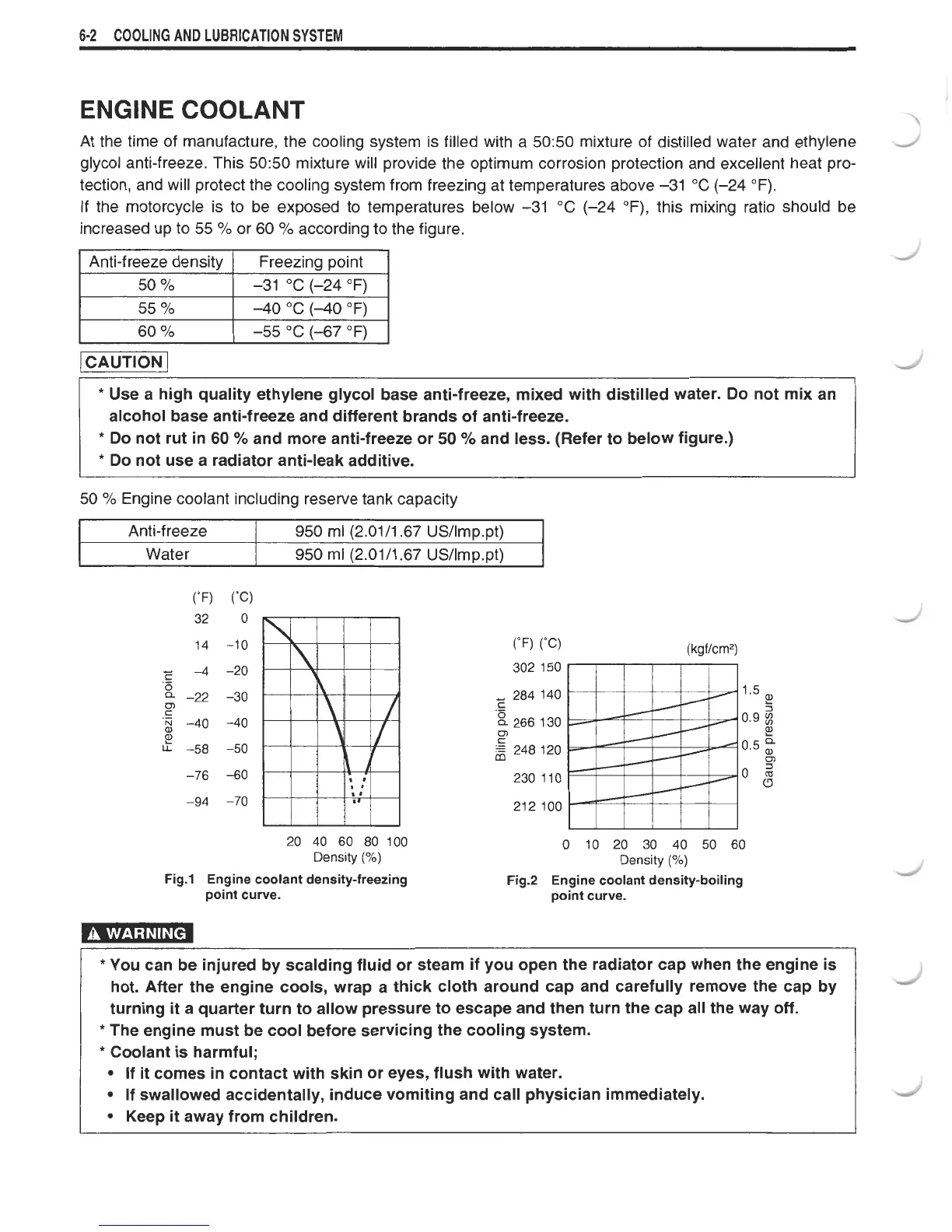6-2
COOLING
AND
LUBRICATION SYSTEM
ENGINE
COOLANT
At the time of manufacture, the cooling system is filled with a 5050 mixture of distilled water and ethylene
-
glycol anti-freeze. This 5050 mixture will provide the optimum corrosion protection and excellent heat pro-
tection, and
will
protect the cooling system from freezing at temperatures above -31
"C
(-24
OF).
If the motorcycle is to be exposed to temperatures below -31
"C
(-24 OF), this mixing ratio should be
increased up to 55
O/O
or 60
%
according to the figure.
I
Anti-freeze density
1
Freezing point
I
1
CAUTION
I
*
Use a high quality ethylene glycol base anti-freeze, mixed with distilled water. Do not mix an
alcohol base anti-freeze and different brands of anti-freeze.
*
Do not rut in
60
%
and more anti-freeze or
50
%
and less. (Refer to below figure.)
*
Do not use a radiator anti-leak additive.
50
'10
Engine coolant including reserve tank capacity
I
Water
1
950 ml (2.0111.67 US1lmp.pt)
I
20 40
60
80 100 0 10 20 30 40 50
60
Density
(%)
Density
(%)
Fig.1 Engine coolant density-freezing Fig.2 Engine coolant density-boiling
point curve. point curve.
*
You can be injured by scalding fluid or steam if you open the radiator cap when the engine is
hot. After the engine cools, wrap a thick cloth around cap and carefully remove the cap by
turning it a quarter turn to allow pressure to escape and then turn the cap all the way off.
*
The engine must be cool before servicing the cooling system.
*
Coolant is harmful;
If
it
comes in contact with skin or eyes, flush with water.
If swallowed accidentally, induce vomiting and call physician immediately.
Keep
it
away from children.

